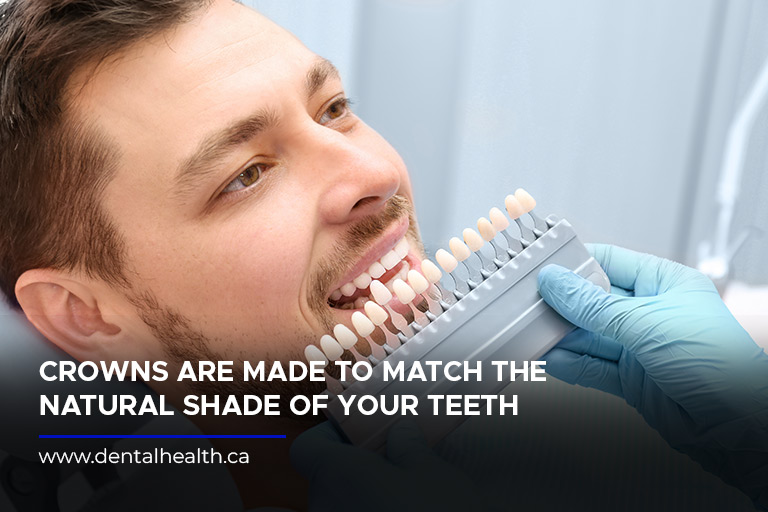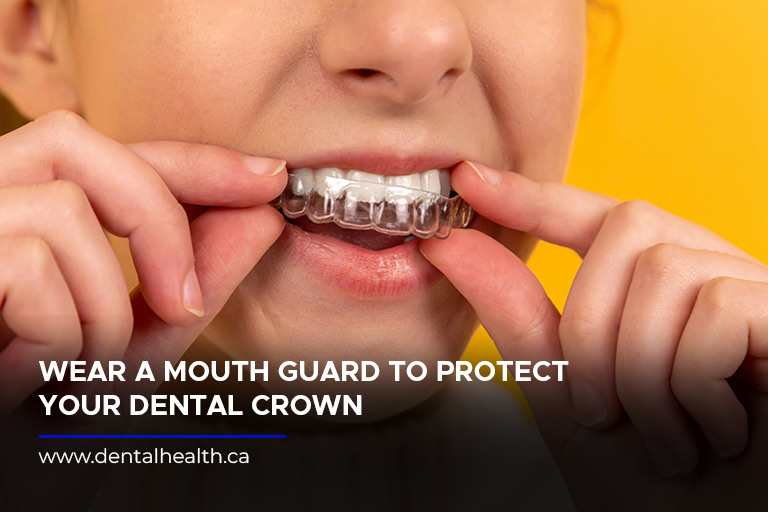Dental crowns stand out as a reliable solution for restoring the function and appearance of damaged or decayed teeth. They offer a way to protect vulnerable teeth while maintaining a natural look and feel. This comprehensive guide to dental crowns provides an overview of the different types available and the care they require and their longevity. Whether you’re considering a crown for cosmetic reasons or to protect a tooth, understanding your options can help you make an informed decision.
What are Dental Crowns?
A dental crown is a tooth-shaped “cap” that’s placed over a damaged tooth, restoring its shape, size, strength, and overall appearance. Crowns are necessary when a tooth is significantly decayed, weakened by a large filling, cracked, or has undergone root canal treatment. They are custom-made to fit your tooth’s exact specifications and can be crafted from materials like porcelain, ceramic, metal alloys, or a combination of them. Crowns offer a long-lasting solution to protect and revitalize damaged teeth.
Types of Dental Crowns
Before deciding on a dental crown, it’s important to understand the various types available. Each type comes with its own set of advantages and potential drawbacks, depending on your specific needs and preferences.
- Porcelain Crowns: Known for their aesthetic appeal, porcelain crowns closely mimic the natural tooth’s appearance. They are an excellent choice for front teeth restorations.
-
- Pros: Excellent natural colour match, suitable for people with metal allergies.
- Cons: Less durable than metal crowns, can wear down opposing teeth more than metal or resin crowns.
- Ceramic Crowns: These crowns offer a strong, durable solution, especially for front teeth.
-
- Pros: Strong and aesthetically pleasing, good for front teeth.
- Cons: Can be as brittle as porcelain, may require more tooth structure removal than other types.
- Gold Alloys: Gold alloy crowns combine gold, copper, and other metals, offering a strong bond to the tooth without fracturing or wearing away the tooth itself.
-
- Pros: Highly durable, does not fracture, wears down at a rate similar to natural teeth.
- Cons: Metallic colour, more expensive.
- Base Metal Alloys: Made from non-noble metals, these crowns are highly resistant to corrosion and extremely durable.
-
- Pros: Requires the least amount of healthy tooth removal, very strong.
- Cons: Metallic colour and may cause allergic reactions in some people.
Dental Crown Procedure

The dental crown procedure is a two-stage process that restores the shape, strength, and appearance of a damaged tooth. This process typically requires two visits to the dentist, each with specific steps to ensure the crown fits well and functions like a natural tooth. Here’s a detailed breakdown:
- First Visit: Examination and Tooth Preparation
-
- Examination and Planning: The procedure begins with a thorough examination of the tooth that needs the crown. The dentist may take X-rays to assess the roots of the tooth and surrounding bone. If the tooth has extensive decay or there is a risk of infection or injury to the tooth’s pulp, a root canal treatment may be necessary before placing the crown.
- Tooth Preparation: Next, the tooth receiving the crown is reshaped along the chewing surface and sides to make space for the crown itself. The amount removed depends on the type of crown used. If a large area of the tooth is missing (due to damage or decay), a filling material may be used to build up the tooth to support the crown.
- Impression: After reshaping the tooth, the dentist makes an impression of the tooth and the surrounding teeth. This impression can be made with a putty-like material or digitally with a scanner. The impression is then sent to a dental lab where the crown will be manufactured. The dentist also selects the shade of the crown to match the colour of your natural teeth.
- Temporary Crown: A temporary crown is usually placed over the reshaped tooth to protect it while the permanent crown is being made. This crown is made from a temporary material and is secured with temporary cement, making it easy to remove at your next visit.
- Second Visit: Placement of the Permanent Crown
-
- Removal of Temporary Crown: The dentist removes the temporary crown at the second visit.
- Fitting the New Crown: Before placing the permanent crown, the dentist checks the fit and colour. If necessary, they can adjust ensure the crown fits comfortably against the surrounding teeth and bites correctly.
- Cementing the Crown: Once the fit is verified, the dentist applies a special adhesive to the crown and places it onto the prepared tooth. After ensuring the crown is positioned correctly, the adhesive is cured (hardened) with a special light if it’s a resin-based cement.
- Final Adjustments: The dentist may make final adjustments to the crown’s fit to ensure it’s comfortable and functional. You’ll be asked to bite down or grind back and forth to check the alignment. If everything is satisfactory, the procedure is complete.
Caring for Your Dental Crown

Proper care can extend the life of your dental crown significantly, whether they are dental crowns for cosmetic reasons or restorative purposes:
- Brush twice daily: Brushing with fluoride toothpaste twice a day helps maintain oral hygiene and prevents decay around the dental crown. This routine ensures the longevity of the crown and supports overall dental health.
- Floss daily: Flossing daily, especially around the crown, is crucial. It removes plaque and prevents gum disease by cleaning the tight spaces between the tooth and the crown that a toothbrush can’t reach.
- Wear a night guard if you grind your teeth: For individuals who grind their teeth at night, wearing a night guard is essential. It protects the crown from excessive wear and tear, preserving its structure and function.
- Avoid sticky foods: Sticky foods can adhere to the crown and potentially pull it off. Avoiding such foods helps in maintaining the crown’s placement and avoiding unnecessary dental visits for repairs.
- Regular dental check-ups: Regular visits to the dentist for check-ups and professional cleaning are important. These visits allow for the monitoring of the crown’s condition and the overall health of surrounding teeth and gums.
- Avoid using your teeth as tools: Using teeth as tools for opening packages or biting nails can exert undue pressure on the crown, risking damage. Such habits should be avoided to maintain the crown’s integrity.
How Long Do Crowns Last?
The lifespan of a dental crown depends on various factors, including the material used, the location of the crown in the mouth, and how well it is cared for. On average, dental crowns last between 5 and 15 years, but with proper care, many crowns can last much longer.
Dental crowns are a versatile solution for restoring and protecting damaged teeth, with various options available to meet different needs and preferences. By understanding the types of crowns, the procedure for getting one, and how to care for it, you can ensure your dental crown serves you well for many years. If you’re considering a dental crown or have more questions on restorative dentistry services, contact Kingsway Family Dentistry at (905) 563-4001. Your dentist in Beamsville, Ontario, is here to help you maintain a healthy, beautiful smile.

